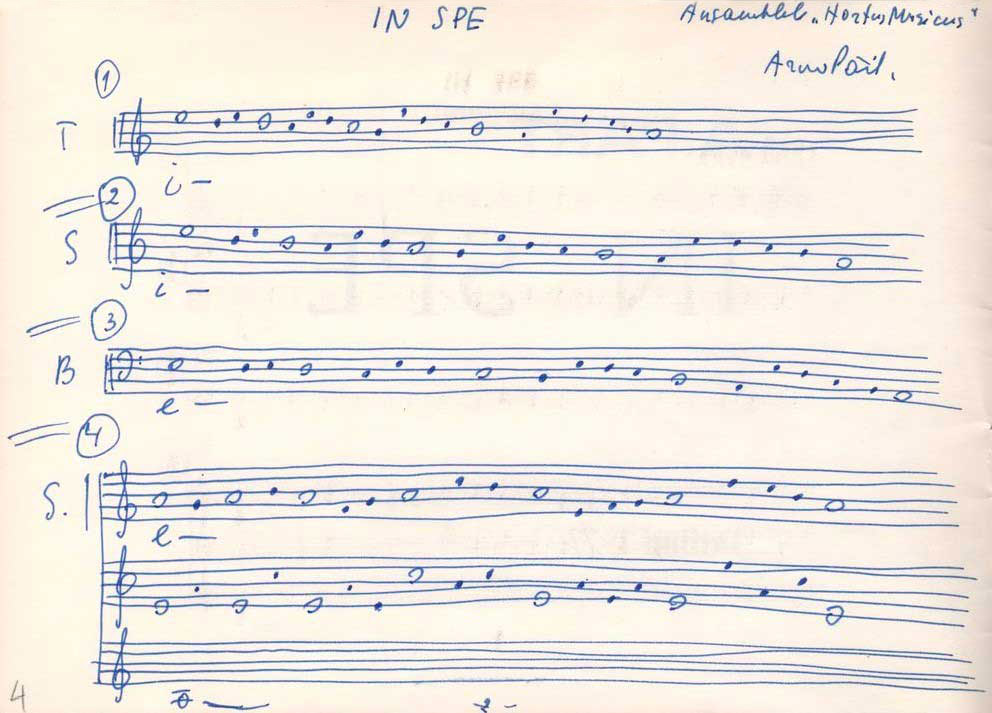Scored for
Duration
7–8 min
Short description
The 2010 composition is based on the opus of the same name from 1976, dedicated to the Hortus Musicus ensemble. On the invitation of John Metcalf, artistic director of the Vale of Glamorgan Festival in Wales, Pärt was able to realise an idea which he had been developing for some time: the transposition and expansion of the work for a larger instrumental setup. Thus, a version was created for wind quintet and string orchestra, which was premiered on 9 September 2010 at the Vale of Glamorgan Festival by the BBC National Orchestra of Wales with Tõnu Kaljuste.
In musical terms, it is a work in rigorous tintinnabuli technique, based on extremely sparse and concentrated material. Moving stepwise, the melodies are formed by segments around the main pitch, prolonged note by n…
World premiere
Contsert: Hear and Now
Tõnu Kaljuste (conductor), BBC National Orchestra of Wales
Completion year
Original version
Commissioned by
Scored for
Duration
Publishers
Instrumentation details
Source text
By the rivers of Babylon, there we sat down, yea, we wept, when we remembered Zion.
We hanged our harps upon the willows in the midst thereof.
For there they that carried us away captive required of us a song; and they that wasted us required of us mirth, saying, Sing us one of the songs of Zion.
How shall we sing the Lord’s song in a strange land?
If I forget thee, O Jerusalem, let my right hand forget her cunning.
If I do not remember thee, let my tongue cleave to the roof of my mouth; if I prefer not Jerusalem above my chief joy.
Remember, O Lord, the children of Edom in the day of Jerusalem; who said, Rase it, rase it, even to the foundation thereof.
O daughter of Babylon, who art to be destroyed; happy shall he be, that rewardeth thee as thou hast served us.
Happy shall he be, that taketh and dasheth thy little ones against the stones.
